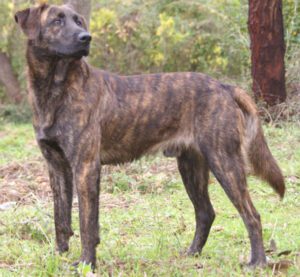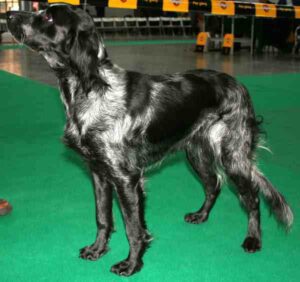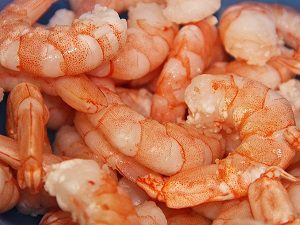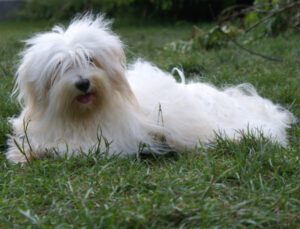The Dalmatian dog is a breed of dog which is noted for it’s unique white coat marked with black or liver-colored spots. And the breed was used as a carriage dog in it’s early days. Today, it is a popular family pet, and many dog enthusiasts enter Dalmatians into kennel club competitions.
The origins of the Dalmatian breed can be traced back to Croatia and it’s historical region of Dalmatia. It is thought that early ancestors of the breed were certain breeds of pointers and a spotted Great Dane. The breed is also known by some other names such as Carriage Dog, Spotted Coach Dog, Leopard Carriage Dog, Firehouse Dog and Plum Pudding Dog.
Although, exact origins of the Dalmatian dog are unknown. These dogs are known to have traveled with the nomadic bands of Romanies, sometimes called gypsies. And it’s unclear where they many have first appeared.
The breed obtained it’s name during it’s stay in Dalmatia, which is a province on the eastern shore of the Adriatic Sea, the area that is now known as Croatia.
The Dalmatian dogs have been utilized for a variety of jobs during their long history, never specializing in one area. They were used as guard dogs in Dalmatia, shepherds, circus dogs, coaching dogs, ratters and retrievers.
It was in England that the Dalmatian was developed as the definitive coaching dog. The breed was used to clear the path before the horses, run alongside the coach or under the coach between the axels. It guarded the horses and coach when they were at rest.
To this day the breed has a natural affinity for horses. And this affinity took the breed on a different career path in the United States. Here the breed become a firehouse dog (running with the horses to the fire, watching over the equipment during a fire, and sometimes even rescuing people from burning buildings).
When the excitement was over, they accompanied the fire wagons back to the station and resumed their duty as watchdog. Today most Dalmatians are companions and family members but many firehouses across the country still have Dalmatians as mascots.[1]
Dalmatian Dog Characteristics
The Dalmatian dogs are medium to large sized dogs. They are well defined, muscular dogs with excellent endurance and stamina. The outline of the dog should be square when viewed from the side: the body is as long from fore-chest to buttocks as it is tall at the withers, the shoulders are well laid back, the stifle is well bent and the hocks are well let down.[2]
Feet of these dogs are round with well-arched toes, and the nails are usually white or the same color as the dog’s spot.
The thin ears taper towards the tip and are set fairly high and close to the head. Eye color varies between amber, blue, brown and purple, with some dogs having one blue eye and one brown eye, or other combinations.
The Dalmatian puppies are born with plain white coats and their first spots usually appear within 10 days. However, spots are visible on their skin from birth. They continue to develop until the dog is around 18 months old.
The spots generally range in size from 1.25 inches to 2.5 inches, and are most commonly black or liver on a white background.
Other more rare colors include blue, brindle, mosaic, tricolor and orange or lemon. Patches of color may appear anywhere on the body, mostly on the head or ears, and usually consist of a solid color. Patches are visible at birth and are not a group of connected spots, they are identifiable by the smooth edge of the patch.
Coat of the Dalmatian dog is generally short, fine and dense. However, smooth-coated dogs occasionally produce long-coated offspring. Long-coated dogs are not acceptable in the breed standard.
Average body height of the mature Dalmatian dog is between 19 and 24 inches at the withers. And their average body weight ranges from 21 to 55 kg. The males are generally larger in size than the females.

Temperament
The Dalmatian dogs are very active and high-energy dogs with endless capacity for exercise. They love attention and have a strong desire to please, making them easy to train through positive reinforcement (such as play, food rewards and praise).
The Dalmatian is a very smart dog with a sly sense of humor, and will do it’s best to make you laugh. The breed is alert and interested in everything that goes on around it and makes an excellent watchdog.
Like other dogs, the Dalmatian also needs early socialization. Exposure to many different people, sights, sounds and experiences are great ways to socialize them, especially when they are young. Early socialization helps to ensure that your puppy grows up to be a well-rounded dog.
Lifespan
Lifespan of the Dalmatian dog breed is between 10 and 18 years, with an average lifespan of between 12 and 14 years.
Feeding
How much a mature dog eats depends on it’s size, age, build, metabolism and activity level. Dogs are individuals, just like people, and they don’t all need the same amount of food.
The Dalmatian dogs are medium in size, but they are highly active. So, their diet should be formulated for a medium sized breed with high exercise needs.
Generally 1.5 to 2 cups of high quality dog food will be enough for a mature dog. Although, you can consult with a vet in your area for better feeding recommendations.
Caring
Taking good care of the animals is very important for raising Dalmatian dogs. You should always keep up with your dog’s regular vet checkups to detect any health concerns early. Your vet will be able to help you to develop a caring routine that will keep your dog healthy.
The Dalmatian dog is very active and needs plenty of exercise daily. It is a fast runner with a great deal of stamina.
If left to it’s own devices, a Dalmatian will head cross country on a jaunt that could last several days. So, always exercise it on leash or in a secure area.
These dogs thrive with human companionship and do not do well if relegated to the background. They should have plenty of time with their family or they will pine.
Weekly grooming with a hound mitt or curry can lessen the amount of hair Dalmatians shed, although nothing can completely prevent shedding. Due to the minimal amount of oil in their coats, Dalmatians lack a dog odor (“dog smell”) and stay fairly clean relative to many other dog breeds.
Health
The Dalmatian dogs are generally healthy. But like all other dog breeds, they are also prone to certain health conditions.
Their common health problems include hip dysplasia, hereditary deafness, iris sphincter dysplasia, skin allergies and urolithiasis. Always try to keep good contact with a vet in your area.
| Breed Name | Dalmatian |
| Other Names | Also known by some other names such as Carriage Dog, Spotted Coach Dog, Leopard Carriage Dog, Firehouse Dog and Plum Pudding Dog |
| Breed Size | Medium |
| Height | Between 19 and 24 inches at the withers |
| Weight | Ranges from 21 to 55 kg |
| Good as Pets | Yes |
| Climate Tolerance | All climates |
| Color | White background with black or liver spots. Black-spotted dogs will always have black noses, and liver will always have brown. Lemon, blue, brindle, or tricolor spots do appear on occasion but they are not accepted colors. |
| Lifespan | Between 10 and 18 years |
| Good for Children | Yes |
| Rarity | Common |
| Country/Place of Origin | Croatia |






